I spent six months living in Rio de Janeiro. While there, I saw the sites, experienced the culture, “learned” the language, and lived the life. I loved it.
If you won’t have as much time to spend as I did, here are what I consider to be the top sites to see in Rio and a few general tips for staying safe.
Also, you’ll have to forgive my pictures being a little (very) rough. I didn’t bring my camera with me to Brazil, so everything was taken with a cellphone. More on why I left my camera at the end!
Table of Contents
Christ the Redeemer
When looking at any list of the best things to do in Rio de Janeiro, Christ the Redeemer is usually at the top of any list.
This massive statue that overlooks the city of Rio de Janeiro has the honor of being one of the new Seven Wonders of the World, and if you’re a traveler of any sort, seeing these seven wonders is probably somewhere on your bucket list.
I went here twice, and it was cloudy both times despite it being a clear day. From what I saw over the months, the clouds like to collect and swirl around the statue.
Tickets can be purchased in person or booked online in advance. Both times I went I bought the tickets there and then took the train up the mountain.
If you book through a tour, you can take a bus right to the top of the mountain which is faster and more convenient.
It should also be noted that the price per ticket in person or through the official site is only $10 USD per ticket while most third-party sellers charge $30.
I have a thing for trains so I’ll take a train 99% of the time when it’s an option.

Sugarloaf Mountain
One of the most famous viewpoints in Rio de Janeiro, you’ll spot Sugarloaf from miles away by the cable car that runs to the top.
It takes two cable cars to get to the top, but many people consider the first stop to be better for watching the sunset, as there will be far fewer people.
Should you decide to go here, I recommend purchasing your ticket online. It’s fast, easy, cheaper, and can be done while you’re already there and walking up to the entrance area.
Purchasing an online ticket allows you to skip the line of people trying to buy a physical ticket in person.
Having been here twice, I couldn’t understand why people would stand and wait when a digital ticket lets you skip the line and walk past them.
If you’d prefer to hike, there is a trail up Urca Hill, but that’s the lower of the two peaks. You still need a ticket to go the rest of the way up (It’s 50 Reals cheaper if done this way.)

Hike Two Brothers
If you enjoy hiking, Two Brothers is a great one. You can do this as part of a tour, or on your own.
Reaching the start of this hike will require you to go through the favela of Vidigal. Vidigal is considered to be one of the safest/most tourist-friendly favelas, but I still wouldn’t recommend hanging around or wandering off on your own.
To get there, have your Taxi or Uber bring you to the entrance of Vidigal, and from there, hire a motorbike taxi to the top of the favela. It’s cheap, and cars don’t go up, so don’t bother trying.
You’ll see the bikes all lined up. Just tell them you’re going to Two Brothers. They’ll understand and know where to take you.
Lots of people will be riding up and down. Once they drop you off, you’ll see where to go, or someone can direct you.
The hike is a big moneymaker for the… community so it’s safe. Just mind your own business, don’t wander, and don’t take pictures of anyone.
At the start of the hike, there will be a fence where you pay a small entrance fee. I can’t remember off the top of my head, but I believe it was R$10 (About $2 USD) A tour will cost you anywhere from $30 – $60 USD.
When I climbed it I asked my friend who was collecting the money and where it went. She said she thought back to the community.
I was skeptical.
Later I asked a few other people, including one whose friends all live in Vidigal. They all said the gang that controls the favela runs the gate. Don’t worry, it’s safe. It’s not a boat they’re looking to rock.
The hike itself isn’t too difficult, though the path can be steep at times and is rutted from heavy rains.
The entire trail is 1.5 km and can be done in an average of 40 minutes.
Make sure to bring water with you, as it can be very hot. There are one or two spots where someone sets up and sells cold drinks, but don’t rely on that as there isn’t always someone there.

Attend a Samba
While the best time for this is clearly Carnival which takes place every year in February, countless smaller sambas take place all around the city. Finding them can just be a little tricky if you don’t know where to look.
The easiest approach here would be to ask a local.
Or, inquire with your hotel as they’re usually going to have the most up-to-date intel.
But if you’re looking for something a little more concrete, there is a samba every Monday in Pedra do Sal. The area has an official Instagram page which is pretty good at getting the information out.
Another good place to look is on sambotica.official where they usually post details about what’s happening.
Attend a Live Show or Performance on the Beach
Rio de Janeiro loves live entertainment and, many shows are held on Copacabana beach.
Aside from the largest concerts like Madonna which are announced months in advance, there doesn’t seem to be a set schedule that I can find. They do however happen with a fair amount of regularity.
In fact, if you go to Google Street View you can see the stage for one of them right now. This stage in particular appears to have more of a stadium setup as opposed to a traditional stage that points down the beach.
These performances always confused me. They are constantly having live events on Copacabana beach, yet they refuse to build a fixed venue.
They spend a week or three building a full-size stage and spectator area from scratch, have 2 to 3 days of live entertainment, and then immediately begin dismantling the entire thing.
The beach then functions as normal for differing amounts of time before they repeat the process and build a new stage for the next show.
I understand they want to keep the beach a beach, but rebuilding stage after stage is just so wasteful and inefficient given how often it happens.
And the stages are never exactly the same so it’s not like they’re just putting together a pre-fab snap job.
Over a million people went to see Madonna play. I went just to see what a crowd of 1 million looked like. Listened to half of a song, and left.

The Museum of Tomorrow
The Museum of Tomorrow, or Museu do Amanhã in Portuguese, is a hands-on, science museum.
It’s small, so you won’t need much time here, but it was fun.
The main exhibition takes visitors through five main areas: Cosmos, Earth, Anthropocene (geological age), Tomorrow, and Us (humans) via several experiments and experiences.
Tickets are cheap at around $5 USD, but admission is occasionally free.

Royal Portuguese Reading Room
Another small and quick view, the Royal Portuguese Reading Room is a stunning library of old that is considered to be the fourth most beautiful library in the world by Time Magazine.
It’s exactly what you’d expect the personal library of an Emperor to look like if he collected books.
I loved it, but you won’t need much time here since you aren’t allowed to walk up along the different tiers.

Cathedral Metropololitana de Sao Sebastio
The Metropolitan Cathedral of Saint Sebastian, better known as the Metropolitan Cathedral of Rio de Janeiro, is a cathedral of the Catholic Church and the seat of the Archdiocese of São Sebastião.
The cathedral is home to the cathedra of the archbishops of Rio de Janeiro. The church is dedicated to Saint Sebastian, the city’s patron saint.
Built in a style that resembles ancient Mayan pyramids, the interior is completely open with massive stained glass windows that stretch from top to bottom.
Again, you won’t need much time here.
Biblioteca Nacional
If you’re into libraries, and I generally am, the largest library in all of South America may be of interest to you.
I didn’t end up going inside, as I heard that it isn’t much of a visitor experience, but to each their own.

The Beaches
Rio de Janeiro is famous for its beaches and the beach life culture. As such, there are numerous beaches to choose from.
As of 2022, the city of Rio de Janeiro has 99 beaches, which makes for a total of approximately 83 kilometers of beach coastline. That’s crazy!
While in Rio I lived in Copacabana, one block from the beach. Needless to say, I was there a lot.
I definitely didn’t see all 99 beaches, but I did ask a good friend of mine who is a local what her top three were and she listed Joatinga, Prainha, and Ipanema.
While I’ve heard of them all, I’ve only been to Ipanema which I liked a lot. For popularity’s sake, as well as name recognition, I should also mention the iconic Copacabana beach.
Just be aware that if you want to go to Ipanema or Copacabana on the weekend, these beaches get absurdly packed. Like, think the Jersey Shore on 4th of July weekend, but with everyone crammed into a much narrower strip of sand.
The weekdays however are a completely different story. There will still be people there, but the crowds thin and you won’t have to hunt for an open spot.
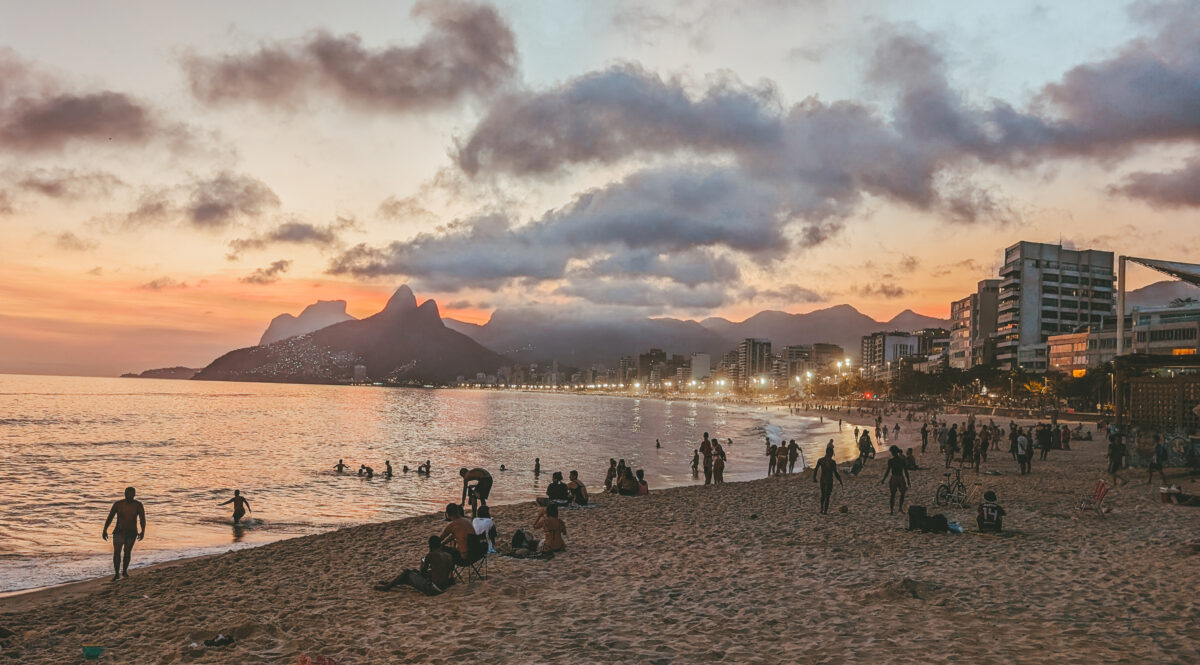
See a Football Match at Maracanã Stadium
Brazilians love football. It’s what we Americans know as soccer. Fun fact, “soccer” is the original name for the sport. American football was named football first.
It’s hard to describe the atmosphere of a match in Maracanã. The capacity is only 79,000, but it feels much larger, with the full fishbowl effect that’s being phased out of many newer stadiums in the USA.
I’m sorry my fellow Americans, but nothing we have compares to this sort of fever.
With the flags, fireworks, and people throwing stuff, it’s an almost maniacal atmosphere, and I’m all about it. Even watching it on TV you can see the higher level of intensity and fandom.
College football rivalry games probably come closest, but they’re few and far between compared to experiencing this 2 to 3 times per week.
No, the Super Bowl doesn’t compare, and even that is only once per year. If you’d like to debate it, leave a comment below.
Rio has four local clubs that are considered major players. Flamengo (the club I support), Fluminense, Vasco da Gama, and Botafogo.
I didn’t know it when I started following them, but Flamengo is the most popular team in all of Brazil. I was pleased to learn this, along with how good they are. Imagine traveling to NYC and unknowingly deciding to follow the Mets instead of the Yankees. Yikes!

The Street Markets of Ipanema and Copacabana
There are several stall markets around Rio but I’m only going to talk about the two I frequented in Copacabana and Ipanema.
While the bulk of the items for sale may be the same, there are also plenty of specialty crafts that you won’t find at the other markets.
Don’t go to either of these expecting to find food as that’s not what they’re about.
Different markets operate at different times and on different days.
The main Copacabana market, located between the streets along the beach near Posto 5 for example, opens in the late afternoon and closes around 10:00 p.m.
The Feira Hippie de Ipanema (Ipanema Hippie Fair) only runs on Sundays from 8:00 a.m. – 6:00 p.m. I felt like this one had more hand-made goods in general.
If you miss these markets the simple fallback is a walk down the sidewalks that line the Copacabana and Ipanema Beaches. While they won’t have the same volume or variety, there are still tons of hawkers who set up on the ground to sell things.
Sunset at Arpoador Beach
This is more dependent on the time of year you go, but seeing the sunset from the rocks next to Arpoador Beach can be magical. Especially when it sets directly behind two brothers.
Arpoador is easy to find, just go to Ipanema, face the ocean, and look left. It’s the small section of beach right next to the rocky point.
The rocks get covered in people, so be sure to get there with enough time to find a good spot to sit.
And remember… clapping for the sunset is just a step away from clapping when your airplane lands.

Academia Publica do Arpoador
A full outdoor gym, right on the beach!
Rio has a huge fitness culture, and with that, gyms can be packed. I know not everyone wants to work out while on vacation, but even if you’re not the type, I’d still recommend checking out Academia Publica do Arpoador.
This outdoor gym is free for all and maintained by local volunteers.
Don’t worry, anyone can go, and there’s no, “locals only brah” nonsense. Just be respectful and don’t drop the weights since they’re made of cement!
The gym can be found at the Parque do Arpoador, between Ipanema and Copacabana.
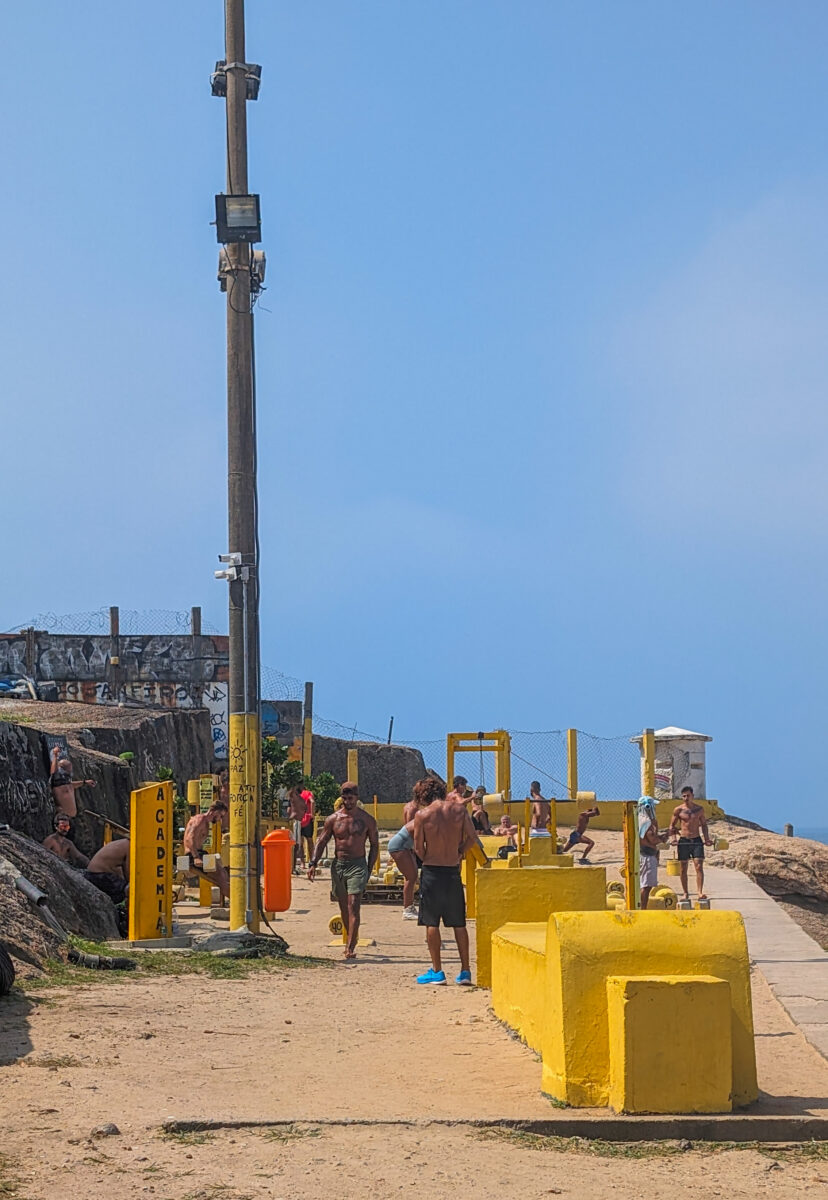
Fort Copacabana
Located on the rocky outcrop that separates Copacabana from Ipanema, Fort Copacabana is an old military base at the south end of the beach.
The base is open to the public and contains the Museu Histórico do Exército (Army Historical Museum), a coastal defense fort that is the actual Fort Copacabana, and two restaurants that offer spectacular waterfront seating that overlooks the bay.
The views are pretty good down by the decommissioned cannons, and if you’re lucky, helicopters like to swoop down and around the point while they’re in the area.
The hours for the Museum are 10 a.m. to 6 p.m. and the fort/restaurants are 10 a.m. to 8 p.m., Tuesday to Sunday.
Admission for adults is R$6 per person (a little over $1 USD).
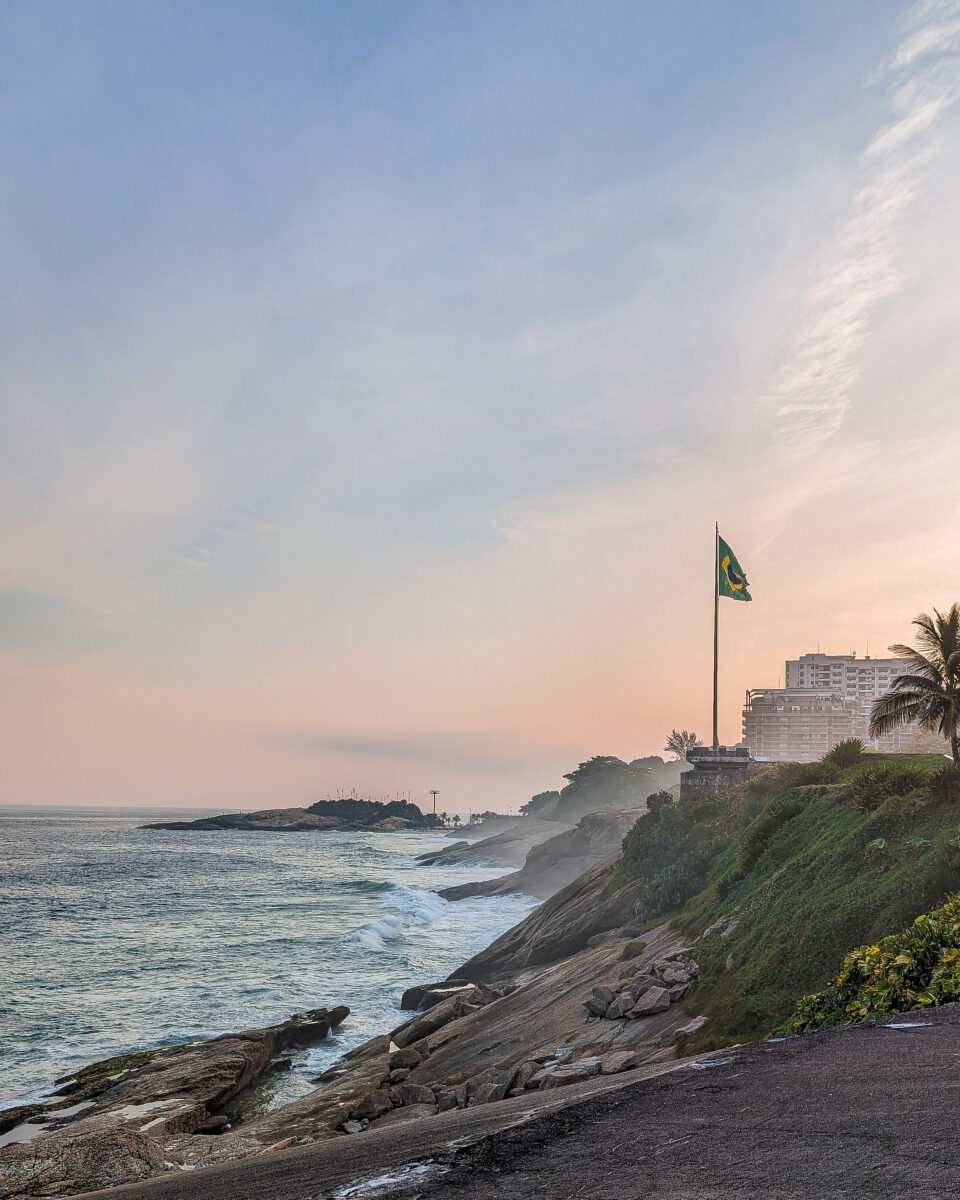
Sunset Sailing in the Bay of Rio
While I haven’t done this since I was solo, if you enjoyed the sunset in Arpoador, maybe you’ll enjoy taking a sunrise or sunset cruise in the bay. These can be very fun if you have a group of people to go.
These can be found all over from the people selling tours along the beaches, or online.

Take a Self-Defense Class
Brazil is the birthplace of Brazilian Jiu-Jitsu. As such, most cities are teeming with academies, and Rio is no exception.
These range from small schools where the classes are just a few people, to larger flagship schools where you can easily expect to see fifty or more students rolling at once.
If you’re visiting Rio de Janeiro, you’ll have the pick of the litter. I went to Relson Gracie Leblon, even though there was a closer Renzo Gracie school (I train at a Renzo Gracie affiliate in the USA).
It’s a small school, but they focus on the more traditional, self-defense-leaning Brazilian Jiu-Jitsu which has fallen out of style in the USA in favor of a competition-focused approach.
If you already train you’ll no doubt already have a direction you’re leaning, but if you’re just trying it out and learning the ropes, I wouldn’t be overly concerned with where you go at first.
There are also hybrid academies if you don’t want to go to a Jiu-Jitsu-specific school.
Or maybe you’d like to take a class on the beach? In Rio, there’s literally a class for everything that you can find on the beach.
The picture below is a screenshot from a video of my friend Tyler stopping a thief via armbar. This happened about a week before the date I’m posting this. He doesn’t go looking for trouble, but this was the fourth time in three years for him.
This guy robbed a store. In the other three incidents, the assailants made the mistake of trying to rob the “gringo tourist.” It’s more amusing when you know that he is living in Rio purely to train for his black belt in Brazilian Jiu-Jitsu at Relson Gracie.

Take a Class on the Beach
What was I just saying?!
There are classes for everything on the beach. Crossfit, self-defense, football, regular HIIT training, volleyball, or the extremely popular altinha, and footvolly.
What are those? Well, altinha is a game in which players use their bodies (but no hands) to keep a soccer ball in the air for as long as possible.
Two or more people circle up, and kick the ball back and forth, trying to keep it from hitting the ground. This is so popular you’ll probably see 10 to 20 games being played along the water on a weekend if you walk far enough.
Footvolly is the same general concept, but it’s beach volleyball played with the feet instead of the hands. Again, this one is extremely popular. There are even small house leagues where you’ll see teams of two playing against each other in front of a crowd.
And the best thing is if you know how to play, finding a game to join is just a matter of asking to join!
There are women-only classes for all of these things as well if you’re uncomfortable training something like this with men, especially self-defense.
To find those, my recommendation would be to walk along Copacabana Beach in the evening. You’ll see one eventually.
Sunrise Paddle Boarding
I did this activity twice. It’s fun, relaxing, and beautiful all at once. It can also be great exercise depending on how much you want to paddle around the water.
For this event, you’ll arrive at the designated meeting point before sunrise, get a crash course lesson on paddling, and then everyone sets out as a group.
Don’t worry if you’ve never done it before or aren’t a great swimmer. They’ll give you a lifejacket if you want, and there’s going to be dozens of people around you, including employees from the company.
The balance can be a bit tricky at first, but again, don’t worry. Most people kneel on the board or sit and hang their feet in the water while they paddle. I stood, granted I grew up on a lake where we did stuff like this often.
Is sunrise too early for you? Don’t worry, you can always rent a paddleboard during the day! There will be far fewer people out too. The only trade-off is that you’ll miss the sunrise, which I must say, is very impressive.

Take a Language Class
Okay, this one might be a bit much for the typical person on a vacation.
I have always wanted to learn a language. Being in Rio for so long afforded me that opportunity. So naturally, aprendi a falar português.
While I may not be fluent, I can do a fair job of understanding what’s being said at this point.
As I mentioned, this might be a bit much for the average vacationer. There are, however, some schools that offer condensed, intensive courses. Or “travel survival” courses.
These are more geared towards the traveler who will only be in town for a couple of weeks, or someone who already speaks another language. They can be perfect for someone looking to dip their toe into the language pool.
The two schools I went to were Idiomas Rio and Português Carioca, but there are others such as Wizard (which I found too expensive) and Caminhos which has a very intensive class… probably too much so for a vacationer.

Go Hang Gliding or Paragliding
Both of these activities are a little more on the extreme side of things but let me tell you… they are funnnn!
It’s hard to describe the sensation. It’s not quite like skydiving (which you can also do in Rio) but at the same time, they’re similar. Having done both, I think hang gliding feels a bit more like flying. It’ also lasts considerably longer.
You’ll need to book these in advance, generally through your hotel or online. You will also see plenty of people advertising for various tours set up along the beach in Copacabana or Ipanema, but I’d stick with your hotel.
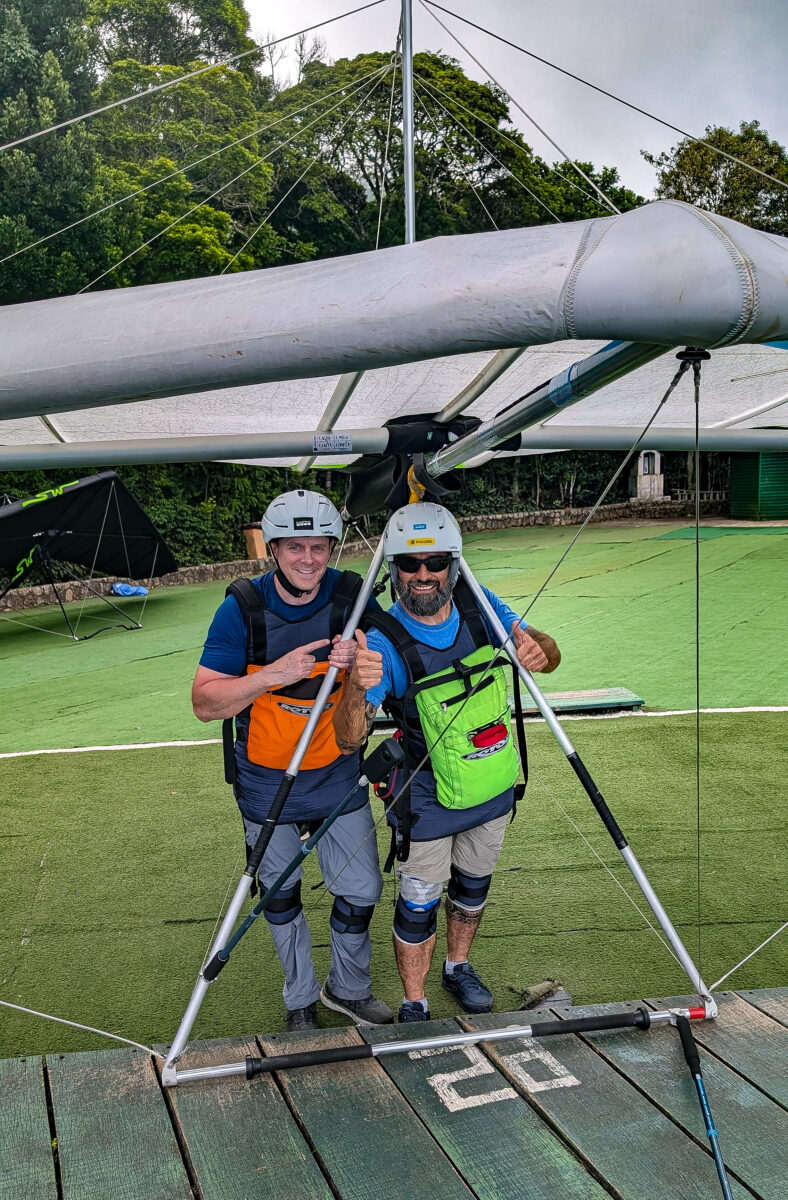
Helicopter Tour
Helicopter tours are a popular way to see the city from a new perspective.
While I have taken several open door helicopter tours over the years, I didn’t take one while in Rio. However, I now think I should have because Rio has one of the most aesthetic coastlines I’ve seen.
If you’re interested, you can find helicopter tours primarily around Christ the Redeemer and Sugarloaf.
Prices vary greatly, but each tour is usually a little different in terms of length and style.
Parque Lage
Parque Lage is a public park located in the Jardim Botânico neighborhood at the foot of the Corcovado mountain, on top of which Christ the Redeemer is located.
Inside you’ll find a sub-tropical forest with pathways for walking, monkeys that will steal your food when you’re not looking, and a picturesque mansion that has been repurposed into a cafe with one of the best photo spots you’ll find in Rio de Janeiro.
Just know in advance that you’ll probably be waiting in line to get that picture.
I didn’t have the patience to wait 45 minutes for a picture, but I did take a photo of the spot from a different(poor)angle. It isn’t the best, but with Christ the Redeemer up in the background, you should get an idea of what your pictures could be.
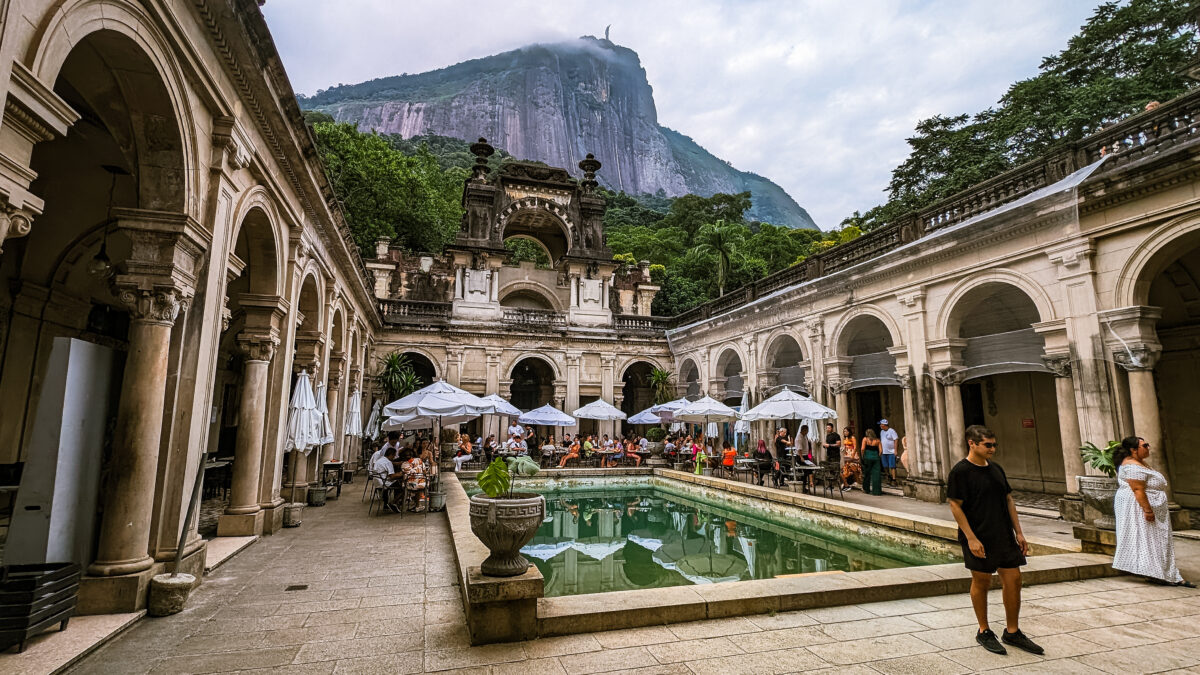
Brazilian Steakhouse
Do you like to eat? Do you like meat?
Well, then I’d recommend skipping breakfast and/or lunch. Because when you go to a Brazilian steakhouse, you will leave full.
I went to one called Assador. While there are differing levels of quality from place to place, this is an upscale steakhouse with dramatic bay views.
The amount of food at these restaurants is mind-blowing. It’s almost like an all-you-can-eat steak buffet, with every cut imaginable. And they bring it to you with a conveyor belt like regularity.
There’s so much food that Assador had little coasters with a green side and a red side. If the green side is up, they’re going to keep bringing you more. You then flip it over to red if you need a break!
While expensive compared to the average price of a meal in Rio, the “Full Rodizio”, which is the endless meat selection, was only R$226.00 per person which converts to a mere $40.41 USD.
For a frame of reference as to how cheap this is, even though I had multiple cuts, if I had eaten at a steakhouse in the USA, I easily ate $150 USD worth of a Tomahawk alone.
No, they won’t put a full Tomahawk right on your table, but there are about ten people walking around nonstop with varying cuts.
You ask for what you want, and they appear either on request or at random, slice you off a piece, and then circle back just about when you’ll be finishing what you had.

Açaí na tigela – Açaí bowl
Açaí na tigela, literally “açaí in the bowl” (I learned this one from the Pimsleur Brazilian Portuguese course!) is a sweet Brazilian snack food from Pará and Amazonas.
It is made with the frozen and mashed fruit of the açaí palm. It’s described as having an “earthy” or creamy taste but I think it’s also bitter/tart/sour.
You’ll usually find it mixed with guaraná syrup and topped with granola and banana, though you can get it with nothing added.
I requested that once and they thought it would be too tart for me lol I love sour stuff… candy, beers, fruit… so I was good.
I would recommend looking for a more traditional place, but there are also commercial places that are similar to the frozen yogurt shops in the USA where there’s a row of 20 different toppings to choose from.
Also, note that traditional Açaí will have a more watery texture as it doesn’t come with the extra things that are typically added to frozen desserts. Because of this, you might think that it’s in the early stages of melting, but that’s how it’s supposed to look.

Escadaria Selarón
Easily one of the best things to do in Rio de Janeiro, The Selarón Steps, also known as the Lapa Steps or the Santa Teresa Convent Steps, and officially as Manuel Carneiro Street, are a tiled set of steps that are bursting with color.
Located between the neighborhoods of Santa Teresa and Lapa, in the city of Rio de Janeiro, the staircase has two hundred and fifteen steps and measures 125 meters in length. The steps are covered with about five thousand tiles collected from over 120 countries.
While the steps can get very crowded, don’t let that deter you, as they are extremely cool to see.
And to think, when Jorge Selarón began his little “project,” his neighbors made fun of how they looked. Now, they’re the biggest draw in the area!
There’s also some incredible street art that can be found along the street at the base of the steps as well.

Café Confeitaria Colombo
Confeitaria Colombo is listed as one of the 10 most beautiful cafés in the entire world, and it’s easy to see why. So of course it needs to go in a list of the best things to do in Rio de Janeiro!
While I’m not a coffee or tea drinker myself, I still felt the need to go and have a snack.
Inspired by the European cafes of old, its architecture boasts crystal mirrors from Antwerp that are framed by rosewood trim friezes, hand-carved wooden furniture, and a massive stained glass ceiling.
My only complaint would be that it’s a little too popular for a café. I.e. It’s extremely busy.
So, if you’re planning on going there to relax for a bit, think again.
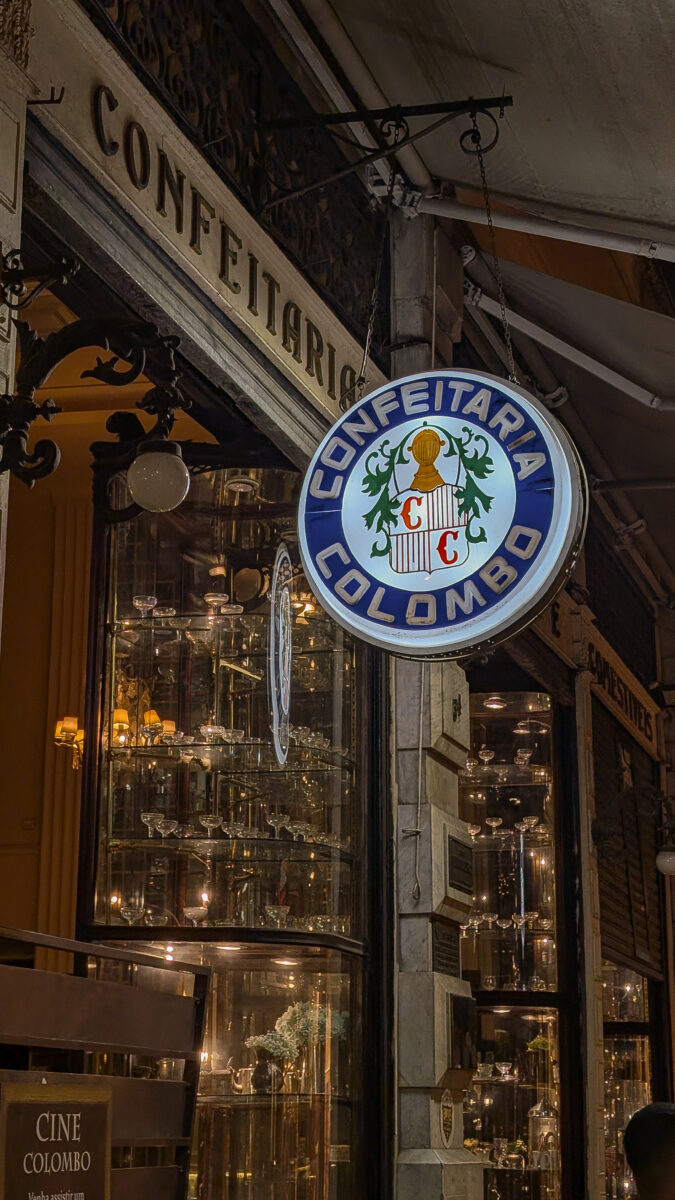
Favela Tour
Skip it. This one kind of pisses me off. Even though this is a common TOURIST activity, often run by people who live there, I’m not going to recommend taking one.
Some Favelas are much nicer than others, but why do you want to take a tour? To see what you think will be poverty? These are tight-knit communities. People’s homes, and not everyone likes the tours.
Going to them as some sort of urban safari is classless poverty tourism. Think about if you lived in a favela and had foreigners staring at you and taking pictures of your home.
Or better yet, imagine taking a tour of a trailer park in the USA. That would be the closest thing to the American equivalent.
They can also be dangerous if you go in alone. Despite the immense number of people living there, the majority of favelas have ZERO police presence beyond the entrances as they are completely controlled by organized crime.
Yes, they self-police, but that’s not the point.
If you really need to see inside of one, climb Two Brothers. The lead-up to the start of the climb goes through Vidigal. Don’t take pictures of people and mind the guys talking on radios. They work for the gangs and are extremely photo-shy.
If you’re invited to visit by a resident, that’s a different story.
Cantagalo, Babilônia, Santa Marta, and Vidigal are largely considered to be the safest.
Some General Tips
While this list is about the best things to do in Rio de Janeiro, it’s not all fun and games. Here are a few things that you should be aware of, just in case.
Phones
The most important thing to know is to protect your phone. I never had mine snatched, but it’s a common occurrence. So much so that I’ve heard locals say they bring an old phone to Carnival so if it gets stolen, it won’t matter as much.
Many people use a tether, one of whom lectured me for being a typical gringo for not using one. LOL
How they get you is they’ll spot you on your phone and grab it as they ride past on their bike. This makes it extra common while walking along the beaches since there’s a bike lane.
Even if you think you’re in the clear, you can never be sure as electric bikes are both fast and silent. You’ll never catch them.
There was one day where I thought I was clear but when I turned, as I put my phone in my pocket, there was someone who rode very close to me down the sidewalk.
He never looked at me, but the second he passed me, he veered back onto the street. Was he eyeing my phone? Maybe.
Keep your head on a swivel.
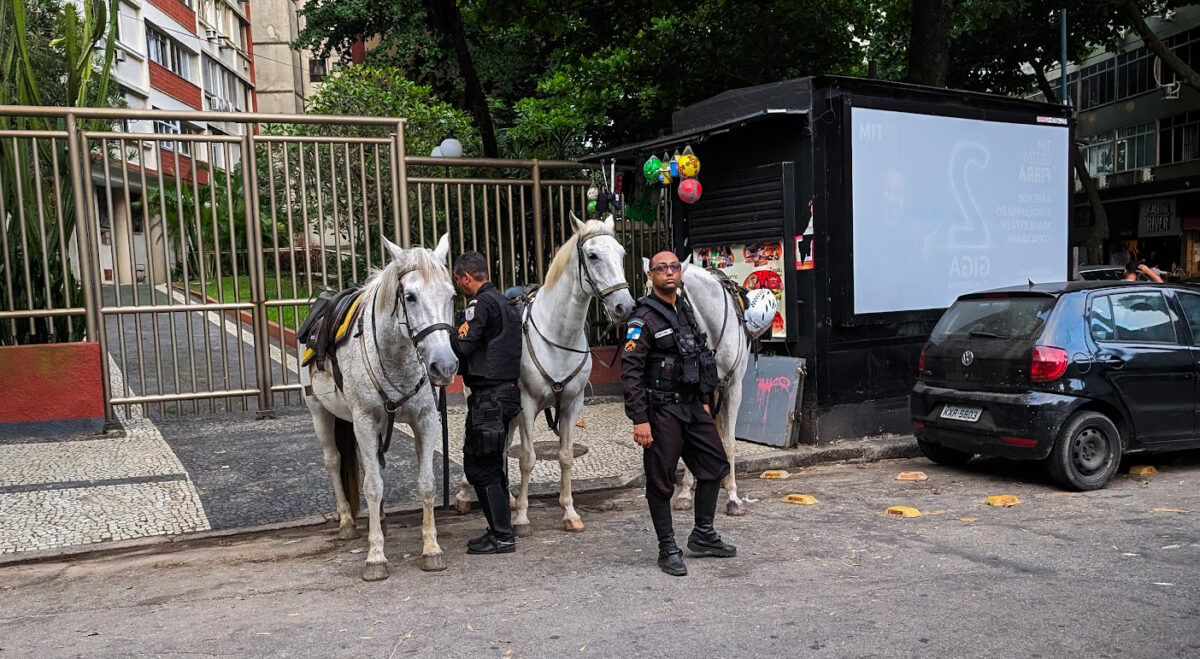
Pickpockets
This is more of a global problem at the moment, but they’re in Rio.
Be vigilant, and keep your belongings in a sealed pocket or chest pouch if you can. While walking in large crowds I usually keep my off-hand in my pocket and on my phone/wallet.
I know someone who had their wallet picked, and that caused him a world of headaches. Lost money, stolen identity, credit issues, the works.
I also had the… misfortune of meeting a professional pickpocket ring from Peru. These guys went to Rio specifically to steal cell phones during Carnival. They travel all over South America to large gatherings just to steal.
They were eventually arrested, but they had almost thirty phones on them when they were caught. And here’s the kicker, one of them took the hit for the whole crew, so the others are back to business as usual.

Opportunists
Be weary about walking around alone at night. You can easily run into a random opportunist who thinks you’d make an easy target.
There are also small packs of (usually) teenagers who come down from the favela at night and will rob you.
I never encountered them, but I heard enough about them.
I walked around late at night all the time, much to the dismay of some of my Brazilian friends. They were horrified when I told them lol
Though, between you and me, at that time, I was looking for a fight with someone trying to rob me… not that I would have stopped otherwise.
These things can also happen in broad daylight if you aren’t alert about your surroundings.
Another friend of mine had a teenager ask her for money. When she said no, he immediately said that he’d just rob her. Calmly, she just asked him, “In front of the police? I’ll scream.” He left her alone.
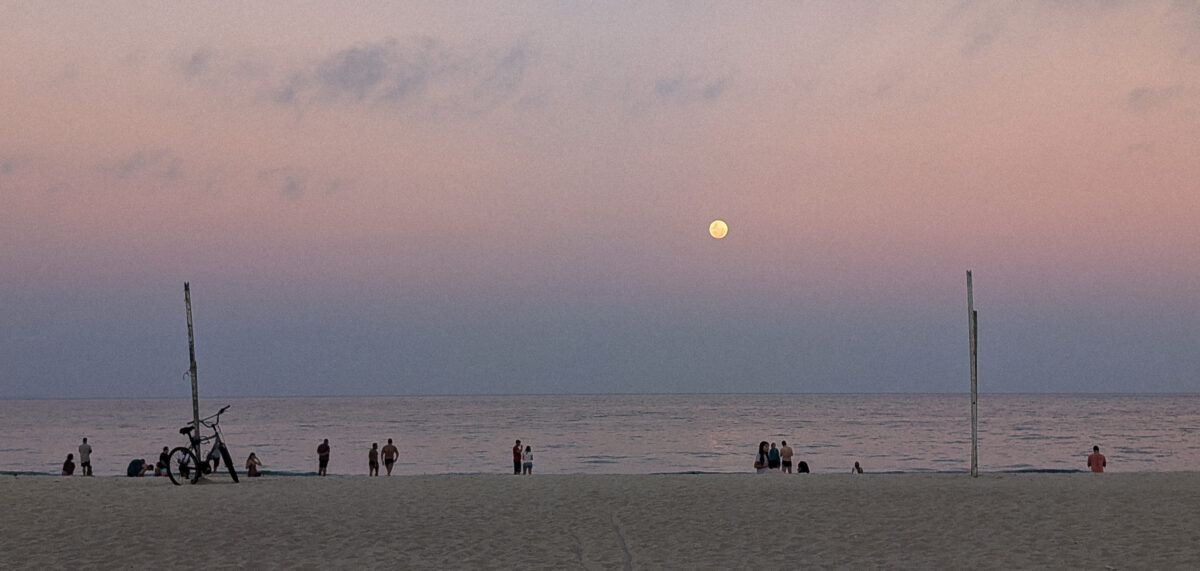
Mind the Bling
I mentioned at the beginning that I didn’t bring my camera with me to Brazil. Well, the reason for that is I wasn’t looking to have it stolen.
Leading up to this trip I did a lot of research on Carnival, and there was always a common theme. People were issuing warnings to bloggers and vloggers about their cameras. It didn’t matter if it was an expensive DSLR camera or a more modest GoPro.
It was always the same, a look of concern, followed by, “Be careful with that camera.”
As such, I ultimately decided to leave mine at home. I knew I’d be walking around a lot, and when you walk around with such an expensive piece of hardware, you’re far more likely to become a target.
So what’s my point here? Don’t make yourself an obvious target. Don’t flaunt things of value.
You may think you’re being good with protecting your belongings, but someone could easily mark you from fifty feet away and follow you discretely until you’re in an area that they deem to be far enough away from the police.
Believe me, it happens.
Police Presence
I know this might all sound scary, but be at ease. There is a VERY large police presence. This goes doubly for the touristy areas like Copacabana and Ipanema.
Walking along those beaches or down the streets it might feel like there’s a cop or two every fifty feet.
In my almost six months of Rio living, there was only one time when I had a bad vibe and turned around. And even that was because I had my parents with me and I was in protection mode.
Had I been alone I wouldn’t have cared as much. This was near the Lapa Arches.

Have you been here before? Or maybe you’re a local! What do you think are the best things to do in Rio de Janeiro? Let me know what you think I missed in the comments below!
DID YOU ENJOY THIS ARTICLE? PIN IT!


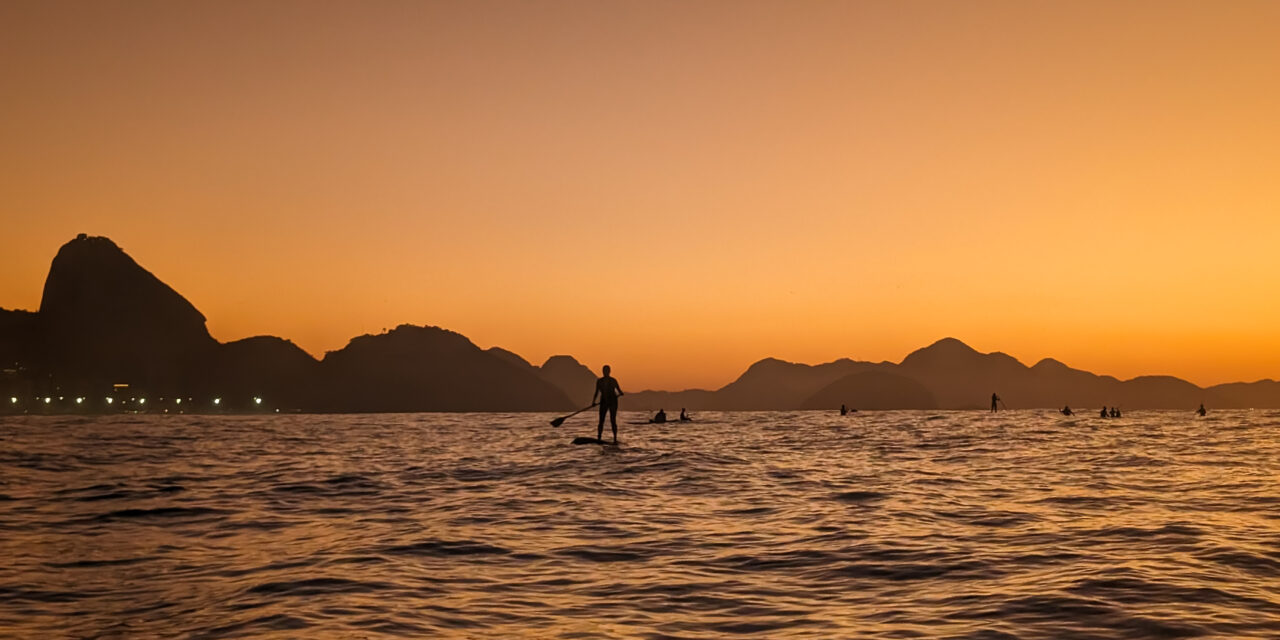

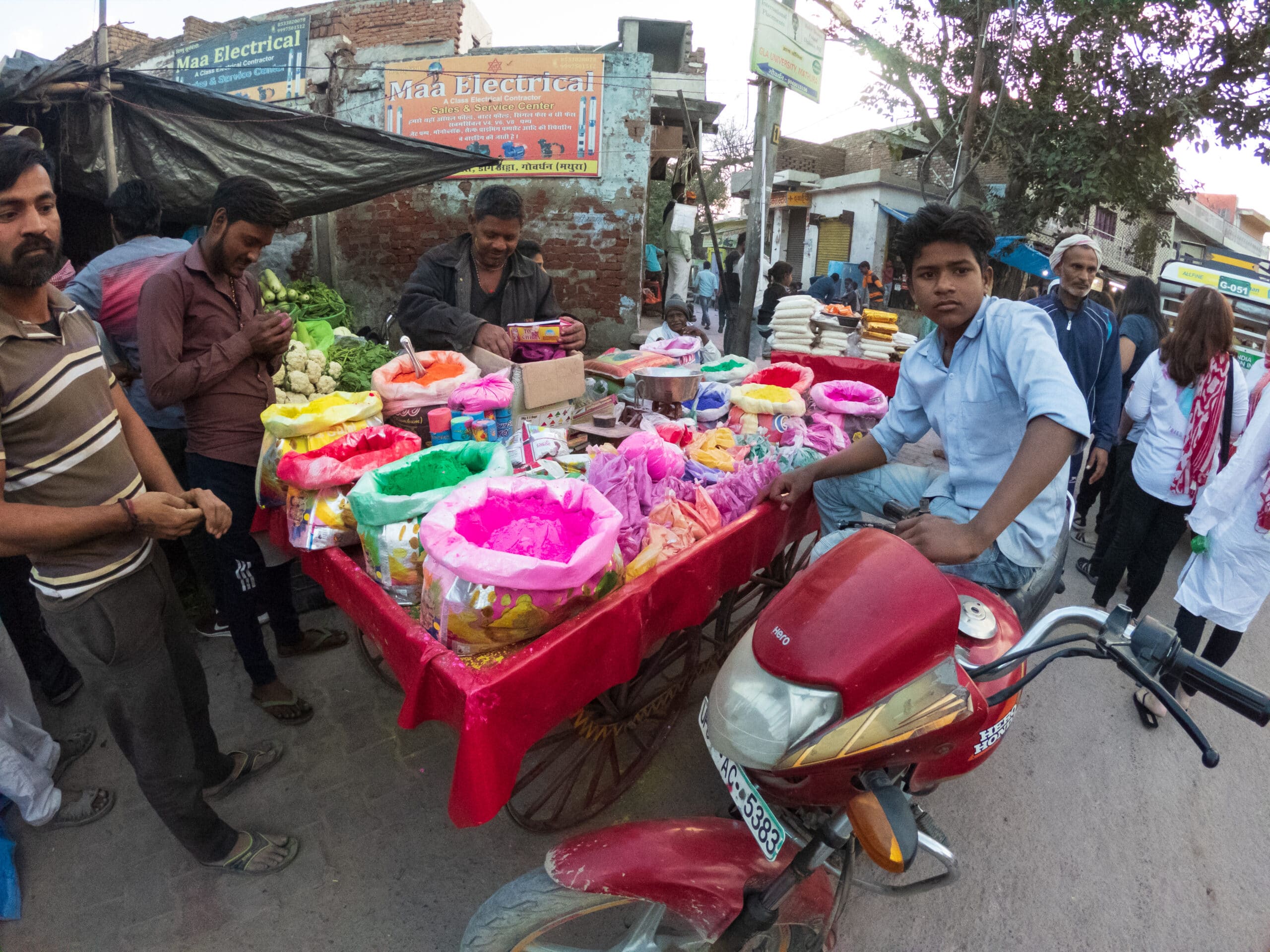

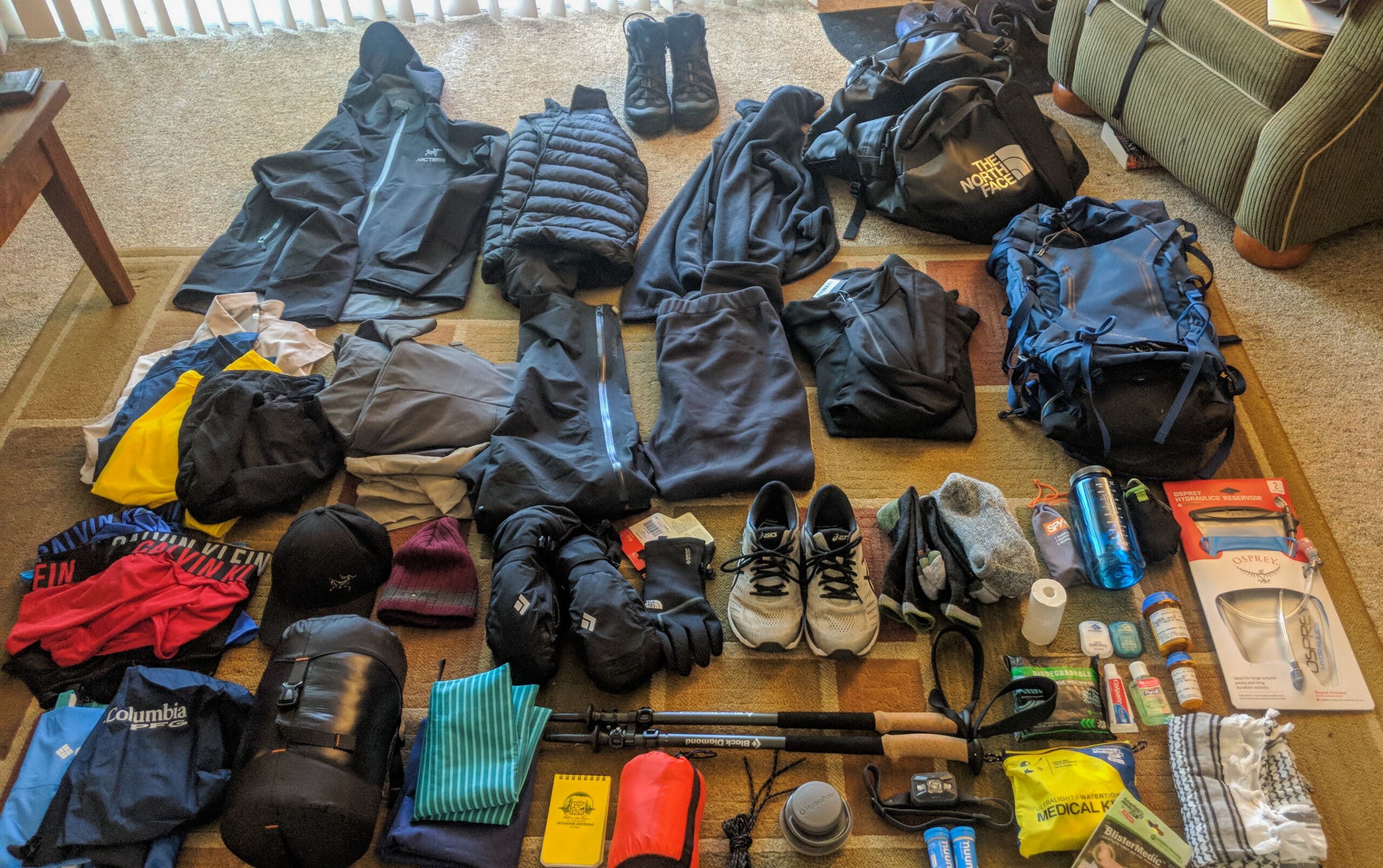

[…] recently made heavy use of these while living in Rio de Janeiro for a few months. Even when I wasn’t looking I would find them everywhere, crammed into whatever space would […]